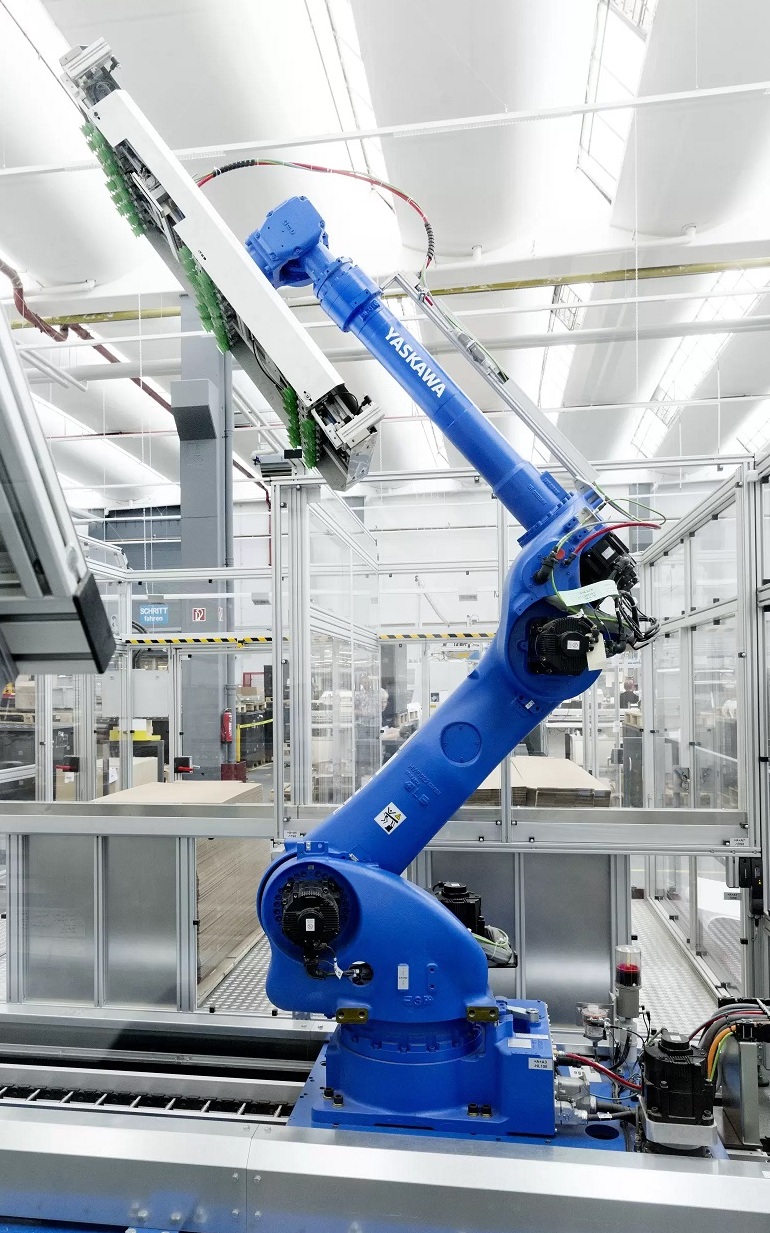Industrial robot reduces energy costs with regenerative braking technology
Reducing energy consumption in today’s highly competitive industrial environment is likely to be higher on most manufacturers’ agendas, especially due to current higher energy costs. With automation playing an increasingly important role in many applications, maximising the efficiency of robots will be of significant interest across all manufacturing sectors.
Features such as regenerative braking can make a big difference to the efficiency of robots, recovering braking energy and feeding it back into the power grid without the need for additional hardware. Motion control and Robotics specialists at Yaskawa have done just this by developing an energy recuperation system to extract braking energy from its large industrial robots with payloads that weigh over 50kg.
The latest YRC1000 robot controls are able to convert kinetic energy from the down and sideways movements directly into 400V AC at 50 Hz and feed in back into the grid. Depending on the movement pattern of the application, the robot’s energy requirements can therefore be significantly reduced.
In applications such as handling, palletising, joining and processing, industrial robots make many down or sideway movements during which the servomotors dissipate energy thereby potentially generating electricity. Up until now, in older robot models, the resulting energy was converted to waste heat through electrical resistance and lost to the environment. In the Yaskawa industrial robot, the electric energy is fed back into the operator network without the need for additional hardware so it can be re-used.
The extent of savings obviously depends on the specific application and the robots individual movement patterns, although realistically savings ranging from 8 to 25% can be anticipated which may result in annual feed-ins of about 2,800 kWh.
This regenerative braking feature represents a step forward for Yaskawa robot drive technology for industrial applications which feature low moving masses and fast application of brakes during movement intervals enabling the active position control to be switched off when not in use which increase the potential for greater efficiency.
- UK manufacturing steps up to COVID-19 crisis - April 2, 2020
- Clustering Innovation - March 12, 2020
- A Global Monitor - March 6, 2020

